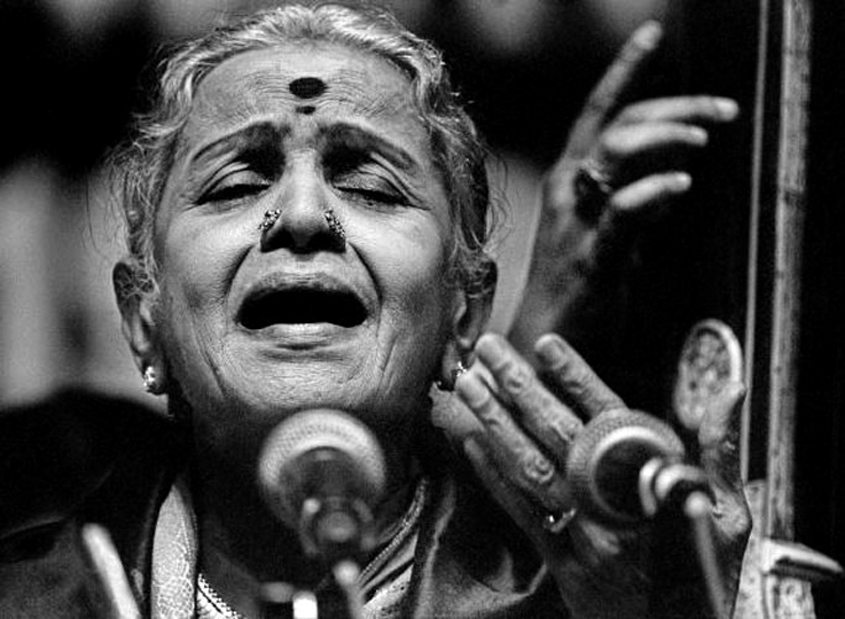This year marks the centennial year of Carnatic musician M.S. Subbulakshmi’s birth, whose name now figures on the same list of honours that glorifies legends like Ustad Bismillah Khan and Pandit Ravi Shankar. A special musical homage was also paid on her 100th birthday recently at her birthplace in Madurai by her great-granddaughter S. Aishwarya. But while M.S., as she is popularly called, has always been used as a peg whenever discussions on Carnatic music have come to the forefront, what remains forgotten is the sectarian sentiment that has ruled the world of Carnatic music — something that M.S. challenged throughout her musical career.
In a new biography marking the maestro’s 100th birth anniversary, T.J.S. George traces the roots of Carnatic music, saying that while religion and language posed no problems for M.S., her social background made her a victim of prejudice when she broke into the musical firmament, as a child prodigy in the early 20th century.
“Carnatic music owes its roots to the 16th century when Pundara Dasa laid the foundations of the world’s most rigorously mathematical musical structure. Two centuries later the Classical Age dawned when three geniuses, the Carnatic Trinity, were born in the same village contemporaneously. The standards set by Thiagaraja, Muthuswamy Dikshitar and Shyama Shastri led to the celebratory years of Carnatic music, the Golden Age of the 20th Century. Such was the proliferation of talent during this period that it saw two different sets of Trinities among women performers too — M.S. Subbulaxmi being one of them,” writes George.
He continues: “The Modern Age followed and a New-Gen of singers, both male and female, were trying to do justice to the Carnatic heritage but on their own terms. One whose name needs to be mentioned was T.M. Krishna, a singer, scholar and iconoclast who began discussing issues that had haunted M.S. Subbulaxmi when she cut her first record at the age of ten; issues like upper caste disapproval of lower caste artistes, male objection to female singers, both of which M.S. overcame. Krishna even went on to describe Carnatic music as a ‘Brahman-dominated male chauvinistic world’ that needed ‘social re-engineering’ and his action backed his words. He withdrew from the almost century-old marghazi ‘season’ of music in Madras to protest against discrimination in the arts,” he adds.
M.S. was much more than her music. In fact, her music and pursuit of the same was an embodiment of the struggles that very few women during that time could fight. While today, much of her reputation seems to be that of a modern-day saint, a demure singer of Sanskrit hymns and devotional compositions, her life, as Sunil Khilnani, a scholar of Indian history and culture, remarked in a BBC podcast, “is deeply uncomfortable when considered through the prism of contemporary feminism”.
Her mother was a devadasi, also known as providers of music and who were officially wed to the deities of the temples they served, often effectively acting as concubines for Brahmins or members of the landed class. Children born to such families, when they came of age, would in turn be made to dedicate themselves to the temple devadasi tradition. So while her brother got formal schooling, M.S. and her younger sister were taught music and performance in preparation for their lives as devadasis. In keeping with the tradition, their mother was also seeking to match her girls with wealthy patrons, and the son of a local prince was taken with Subbulaxmi. That was to be her fate, but when her mother tried to settle her with him, M.S. resisted. That was one of the earliest glimpses of her independent spirit, that she was able to stand up to and fight this expectation.
Subbulakshmi’s life, as Sunil Khilnani, a scholar of Indian history and culture, once remarked in a BBC podcast, “is deeply uncomfortable when considered through the prism of contemporary feminism”.
In 1936, she received a request for an interview from a popular Tamil magazine. The interviewer was the magazine’s co-founder, a man named Sadasivam. Sadasivam had been an anti-British radical in his youth, and was jailed for it, alive to revolutionary ideals. He was close to the nationalist Congress party, and agitated for independence as he ran the magazine. He was also the man M.S. later went on to marry.
In her musical journey, she was the earliest to compete with male vidwans (practitioners of Indian classical music), in both form and substance, including niraval (a Carnatic improvisational technique), swara and pallavi singing, a fact that has quite often been overlooked. Her guru, Semmangudi Srinivasa Iyer, in fact, is said to have singled out three aspects of technical perfection as special to M.S.’s style, saying, “No other woman can sing tanam like her. For me, her reach in the lower octave, was outstanding among the female musicians of that period. It was as impressive as her obvious essays in the higher. Thirdly, I should rate her niraval singing among the best I have heard from women.”
In fact the universality of her appeal today owes in large measure to the vast collection of songs in several languages over and above the impressive range of classical compositions. Whether Hindi, Gujarati bhajans to Marathi abhang to Rabindra Sangeet, they were all marked by lyrical allure, poignant to the core. Beneath the persona of the singer-devotee, lay an artist and a woman whose extraordinary life was marked by an impeccable absorption of the art form, stretching its limits and even challenging the same as is evident from her life story when she went on to support the Tamil music movement, which was challenging the dominant mainstream Carnatic musical repertoire of the Trinity who wrote mostly in Sanskrit and Telegu.
M.S.’s choices were therefore indicative of a woman, well ahead of her time — a musician who was charting newer paths of interpretation and imagination for the future generations.

